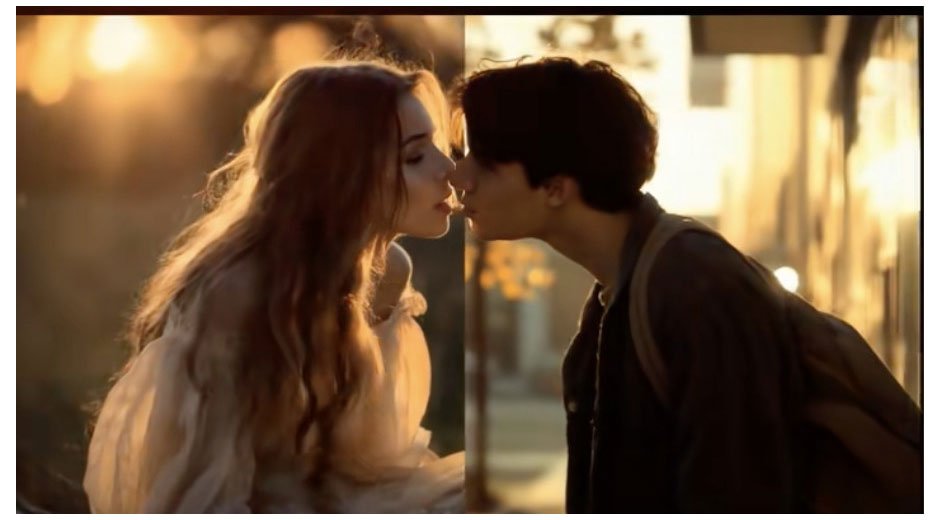Artificial intelligence has been rapidly advancing in visual and audio synthesis, and one of the more intriguing developments is the emergence of Kissing AI—technology designed to simulate realistic kissing motions in images and videos. While it may sound niche, Kissing AI is influencing broader innovations, especially in Talking Photo AI, a field where static images are brought to life with speech, expressions, and realistic facial movements.
By studying and perfecting the subtle dynamics of lip movement and facial interaction, Kissing AI is pushing the boundaries of realism in talking photo applications. Let’s explore how these two technologies connect and how one is driving progress in the other.
Table of Contents
Understanding Kissing AI
Kissing AI refers to artificial intelligence systems trained to generate or animate kissing scenes in a visually believable way. This is no small feat—capturing the realism of a kiss requires simulating a complex interplay of facial muscles, head positioning, lip contact, and sometimes even emotion conveyed through eyes and body posture.
The models behind Kissing AI rely on computer vision, deep learning, and often Generative Adversarial Networks (GANs). By studying real-world references, these systems learn:
- How lips compress and shape during contact.
- The micro-movements around the cheeks and jawline.
- Synchronization of head tilts and eye closure.
Because of this detailed understanding, Kissing AI produces highly lifelike animations that avoid the awkward or robotic motions often seen in earlier AI-generated facial interactions.
What Is Talking Photo AI?
Talking Photo AI takes a still image of a person—historical figure, celebrity, or even a personal photo—and animates it to make the subject appear as though they are speaking. This technology has gained popularity in:
- Historical and educational content – Bringing archival images to life.
- Marketing and personalization – Creating interactive customer experiences.
- Entertainment – Animating fictional or stylized characters for storytelling.
To achieve this, Talking Photo AI needs precise lip synchronization, accurate mouth shapes for different phonemes (speech sounds), and natural facial expressions.
How Kissing AI Influences Talking Photo AI
At first glance, kissing and talking may seem unrelated, but in the world of AI facial animation, they share a critical challenge—realistic mouth and facial motion generation. Here’s where Kissing AI has made a noticeable impact:
1. Enhanced Lip Movement Precision
Kissing AI focuses on micro-adjustments in lip shape, tension, and softness. These same improvements are crucial for Talking Photo AI, where the accuracy of lip movements can make or break the illusion of speech. Training AI on kissing dynamics has indirectly improved how talking photo models handle subtle transitions between sounds.
2. Better Facial Muscle Simulation
When people kiss, numerous facial muscles engage simultaneously—similar to when someone speaks with expression. The improved modeling of these muscle interactions helps Talking Photo AI achieve more expressive and emotionally rich animations.
3. Natural Motion Transitions
A kiss often involves smooth, continuous transitions in head movement and lip positioning. Talking Photo AI benefits from these advancements, creating smoother shifts between facial expressions during conversation rather than rigid, frame-by-frame changes.
4. Realism in Close-Up Animations
Talking photo content often involves close-up shots, where small inaccuracies become very noticeable. Since Kissing AI prioritizes hyper-realism at close range, its breakthroughs carry over into making speaking animations appear more authentic in detail.
The Technical Overlap
Both Kissing AI and Talking Photo AI share a reliance on:
- Facial Landmark Detection – Identifying key points around the eyes, mouth, nose, and jaw.
- Mesh Deformation Models – Adjusting the virtual “skin” of the face realistically as it moves.
- Texture Mapping – Preserving natural skin tones and details during motion.
By refining these shared processes, developments in Kissing AI create a ripple effect, accelerating improvements in Talking Photo AI.
Applications Beyond Entertainment
While both technologies are often associated with social media and creative industries, their impact stretches further:
- Telepresence & Virtual Meetings – More realistic facial animations make avatars and holograms feel natural during conversations.
- Language Learning Tools – Accurate mouth shapes help learners observe correct pronunciation visually.
- Digital Heritage Preservation – Museums and educational institutions use lifelike talking portraits to engage audiences.
- Healthcare & Therapy – Facial expression training for people with communication challenges benefits from more realistic AI modeling.
Ethical Considerations
As these technologies advance, they also raise concerns. The same tools that create engaging educational videos can be misused for deepfakes or non-consensual content. Responsible use requires:
- Clear labeling of AI-generated media.
- Consent from subjects in personal or commercial use.
- Platform safeguards to prevent harmful applications.
Kissing AI, in particular, must be developed with strong ethical guidelines, as intimate visual simulations have higher potential for misuse.
The Future of Talking Photo AI with Kissing AI Influence
We can expect Talking Photo AI to become significantly more lifelike as it integrates techniques perfected in Kissing AI research. Future developments may include:
- Real-time interaction – Live conversations with AI-generated talking photos that adjust facial expressions dynamically.
- Hyper-real emotion mapping – More nuanced smiles, pauses, and facial cues that feel natural.
- Cross-modal synthesis – Combining voice tone analysis with facial animation to create truly expressive digital personas.
The convergence of these technologies could make AI-generated communication nearly indistinguishable from human interaction, opening new opportunities for education, entertainment, and business.
Final Thoughts
Kissing AI may have started as a niche innovation, but its influence is reaching far beyond its original scope. By perfecting the subtle art of lip and facial movement, it has given Talking Photo AI the tools to create more convincing, emotionally engaging, and realistic animations.
As the line between static images and dynamic storytelling continues to blur, the collaboration between these AI fields promises a future where digital interactions feel more human than ever—provided that innovation moves forward with responsibility and respect.
